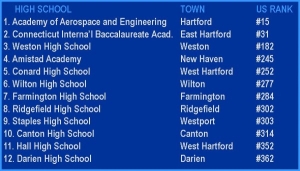dcapuano@learningconsultantsgroup.com
sstaunton@learningconsultantsgroup.com

Motivating Students Based on Personality
General frameworks for success do not always work for specific students in Connecticut high schools.
The Learning Consultants has succeeded in part through developing a deep understanding of our students. While we typically get to know our students through conversations with tutoring or teaching test prep, we sometimes take the process a step further with personality profiling. This is most often through our Student Mastery Program.
There are several tests that we use.
Myers-Briggs is likely the test that many parents know. We emphasize that this is not the single, or what we find to be the most effective, test that we use. However, since it is the test has made its way into corporate human resource norms, it does serve as a means to explain the issue of personality in the context of student life.
In Myers-Briggs typology, there are four general preference dyads (E-I) (N-S) (T-F) (J-P).
The E-I continuum relates to the level of Extraversion v Introversion of the test-taker.
The N-S continuum measures the iNtuitive v. Sensate levels of the test-taker.
The T-F continuum analyzes the test taker’s level of preference for Thinking v. Feeling.
The last dyad: J (judging) and P (perceiving) focuses on the test taker’s preference for structure.
Judging is a bit of a misnomer, as the focus of this label deals more with the preference for structure than it does for what we think of “judgment” or having a judgmental nature. Simply put, Js like structure.
The label P, likewise, is not the best label for what the type conveys. For sake of brevity, we can simply note that those with a P preference feel confined when facing too much structure.
We have come across our fair share of students who are truly struggling within the confines of a structured environment. Invariably, they tend to test as Ps in the Myers-Briggs typology.
So, for example, we worked recently with “Paul”, a wildly fun but study challenged 9th grade student from Guilford High School in Connecticut. He tested as an off the charts “P”. We crafted a Student Mastery Program based on the following principles:
When we work with Ps, we know that their desire for movement, freedom, and fun go against the structured classroom world.
We create strategies that help keep them on task, such as getting them heavily involved in note-taking in order to keep them focused.
We also try to structure their studying to include time for breaks and fun — within
limits.
From a parent’s perspective, they should understand their child’s preferences and then figure out the best way to both modify their behavior and adjust to their personality.
My book Motivate Your Son has more information if interested.

